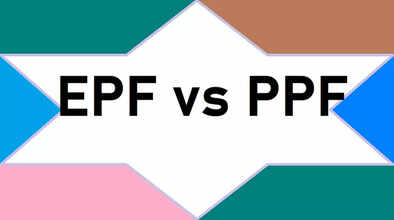PPF vs EPF: What's the difference? Which one will create a bigger corpus if you invest for 15 years? Understand everything...

We all want a portion of our earnings to be safe and to build a substantial fund by retirement. Whether employed or in business, everyone's question is where to invest their money to earn good interest and tax benefits without risk. This is why people are often confused about PPF (Public Provident Fund) and EPF (Employee Provident Fund). Both are government-backed schemes, but what is the difference between them (PPF vs. EPF difference), and which one offers higher returns? Let's understand everything with a simple calculation.
What is PPF?
Whether employed or in business, every Indian can invest in PPF. Accounts can be opened at post offices or select banks, and the lock-in period is 15 years. The minimum annual deposit is ₹500 and the maximum is ₹1.5 lakh. Currently, it earns 7.1% interest. Both maturity and interest are tax-free. After maturity, it can be extended for 5 years each.
What is EPF?
EPF is only for employed individuals. Both the employee and the employer contribute money. The employee contributes 12% of their basic salary, and the employer contributes the same amount. It currently earns an annual interest rate of 8.15%. The account is transferable upon changing jobs. The entire amount is tax-free upon retirement. Advance withdrawals are also available if needed, subject to certain conditions.
PPF vs. EPF: Which one is better in terms of returns?
If we consider the interest rate, EPF offers higher interest rates than PPF. PPF offers 7.1% interest. If you deposit ₹1.5 lakh every year, you will receive a corpus of ₹40 lakh upon maturity after 15 years. Compounding plays a crucial role in building a large corpus. However, with 8.15% interest in EPF, the same amount can reach approximately ₹44 lakh.
PPF vs. EPF: Which is more beneficial?
Everyone can invest in PPF. It's safe and offers tax benefits. EPF, on the other hand, is for employed individuals. It offers higher interest rates and is a great option for retirement.
Personal finance experts say that if you're employed, EPF is automatically your best savings tool. However, if you're not employed but are a business owner or freelancer, PPF is the best option. Both investments offer reliable ways to build a large corpus and save tax over the long term.
Disclaimer: This content has been sourced and edited from Dainik Jagran. While we have made modifications for clarity and presentation, the original content belongs to its respective authors and website. We do not claim ownership of the content.

